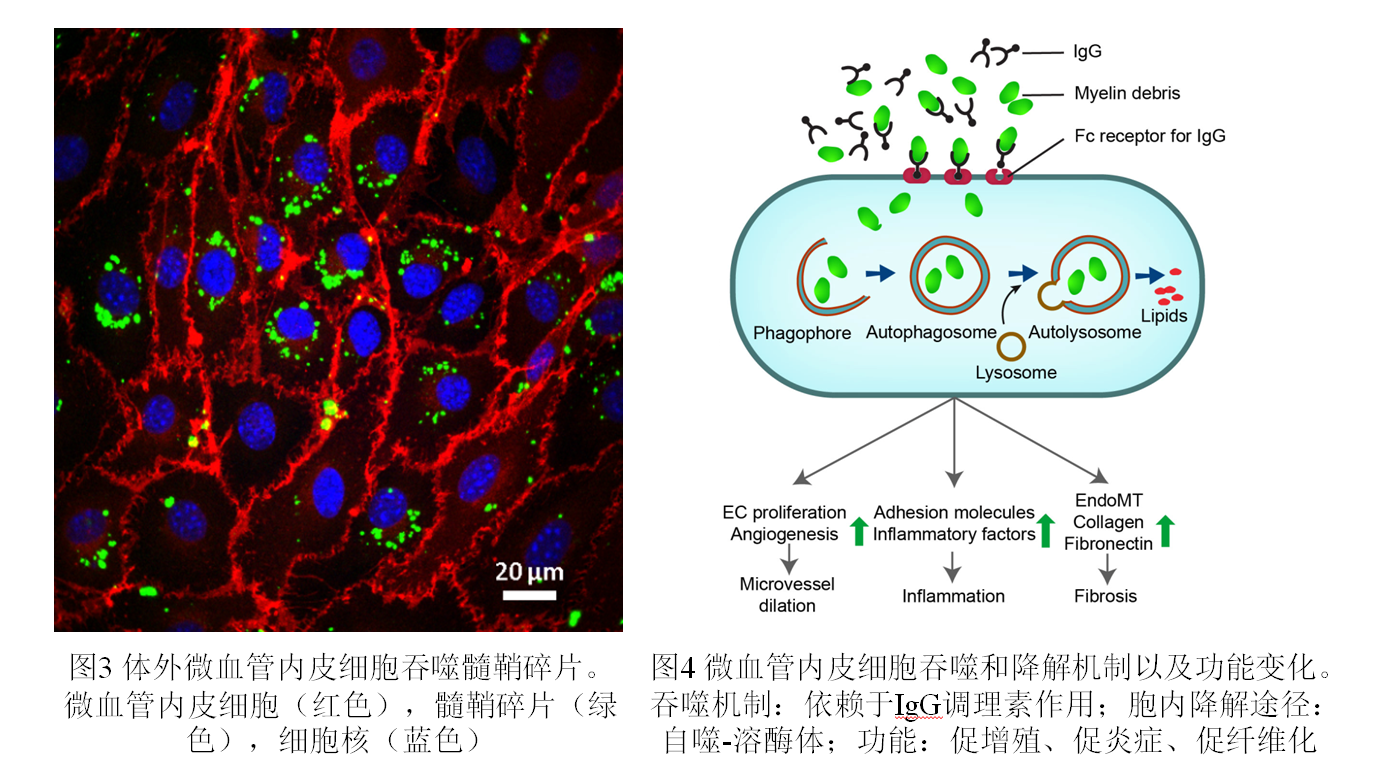Spinal cord injury resulting from car accident, fall, sports or other violence is often associated with acute injury of myelin sheath. It takes one week for bone marrow-derived macrophage to saturate the injured spinal cord. There have been very few articles released about whether other cell types are responding to the stimulation of myelin sheath debris in the damaged area and its related mechanisms.

In the collaborative experiment research carried out by the research group led by Professor Ran Yi from the Medical School of Florida State University and Professor Wang Gigue from the School of Bioengineering of Chongqing University, it was found that the micro vascular endothelial cells would function as cells of new-type phagocyte myelin sheath debris in demyelization diseases (Fig.2), and degrade myelin sheath debris through the autophagy-lysosome new path (Fig.3). In addition, it triggers recruitment of marrow-derived macrophages by metergasis, so as to expedite formation of chronic inflammation, angiogenesis and scar of demyelization diseases (Fig.4), which may result in secondary damage to patients of demyelization diseases. This research provides a new way of thinking for clinic treatment of demyelization diseases. The research achievement was released on line by Nature Neuroscience, a sub-journal of Nature, under the title “Micro vascular endothelial cells engulf myelin debris and promote macrophage recruitment and fibrosis after neural injury” on January 21, 2019. (IF: 19.912)

This research has discovered that micro vascular endothelial cells are new cell types that would respond to stimulation of myelin sheath debris after demyelization and revealed for the first time the new mechanism of secondary damage to spinal cord as a result of innate immune response after micro vascular endothelial cells phagocytose myelin sheath debris. It was proposed for the first time that the secretion of fibrosis component as expedited by micro vascular endothelial cells was the new mechanism of cicatrization in the spinal cord injury area. Researchers hope to find new ways of treating spinal cord injury by better understanding the genesis and development mechanism of diseases.
This research has been completed under guidance of Professor Ran Yi from the Medical School of the Florida State University. Zhou Tian and Zheng Yiming, doctoral candidates, are first co-authors. Professor Ran Yi is the corresponding author. Professor Wang Gigue of the School of Bioengineering of Chongqing University and Zheng Yiming are corresponding co-authors.
Link of the paper: https://www.nature.com/articles/s41593-018-0324-9

